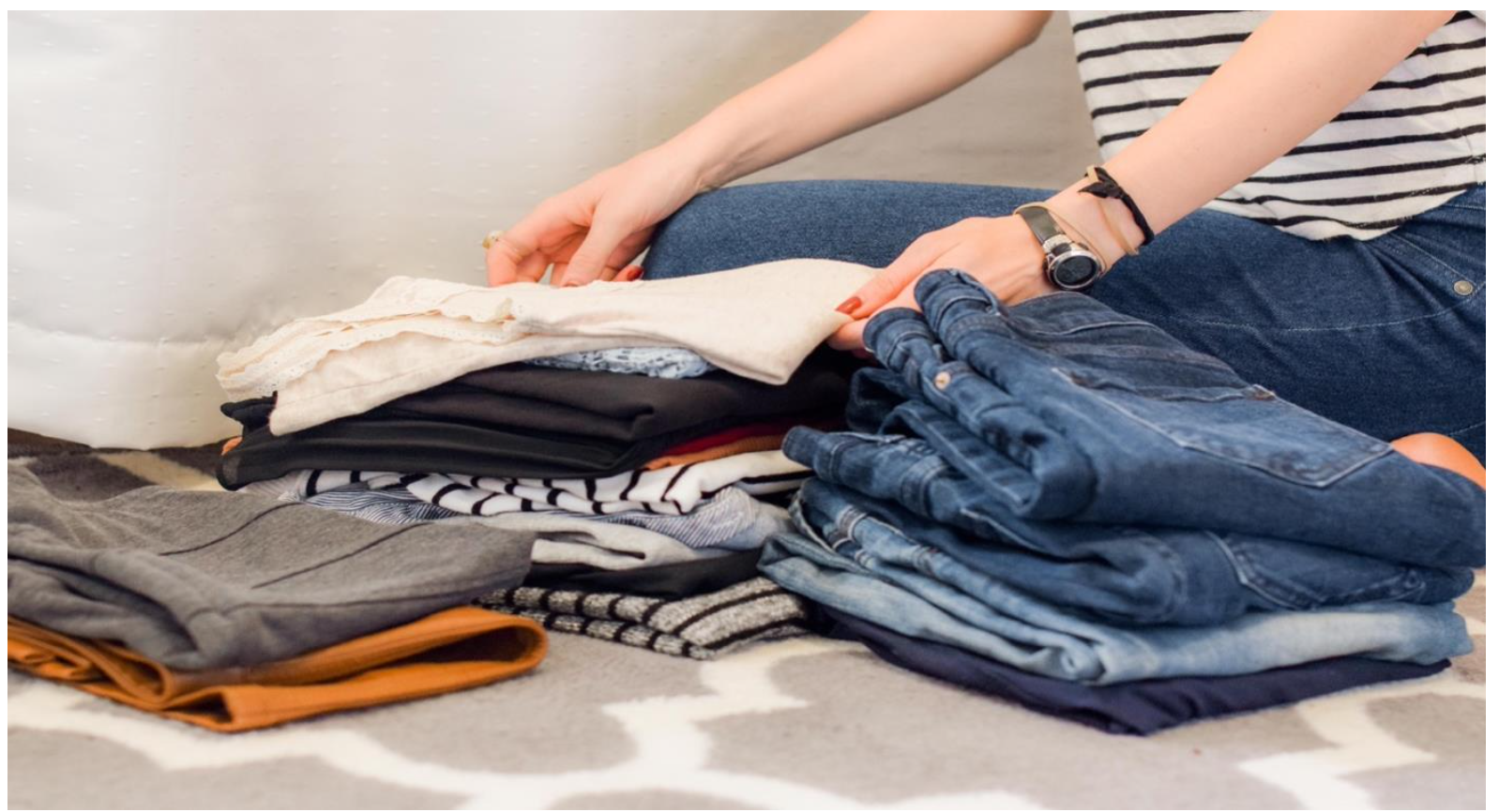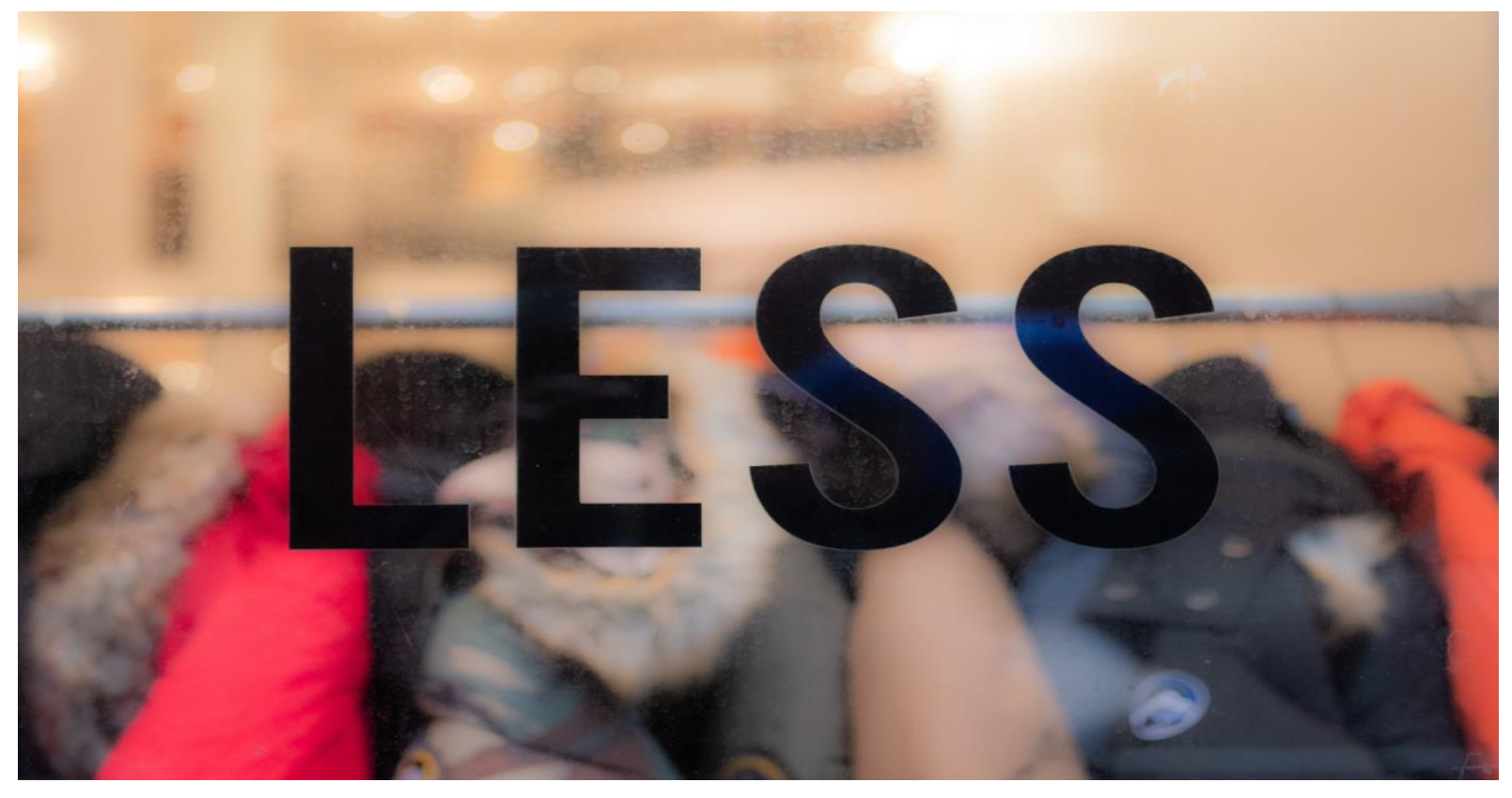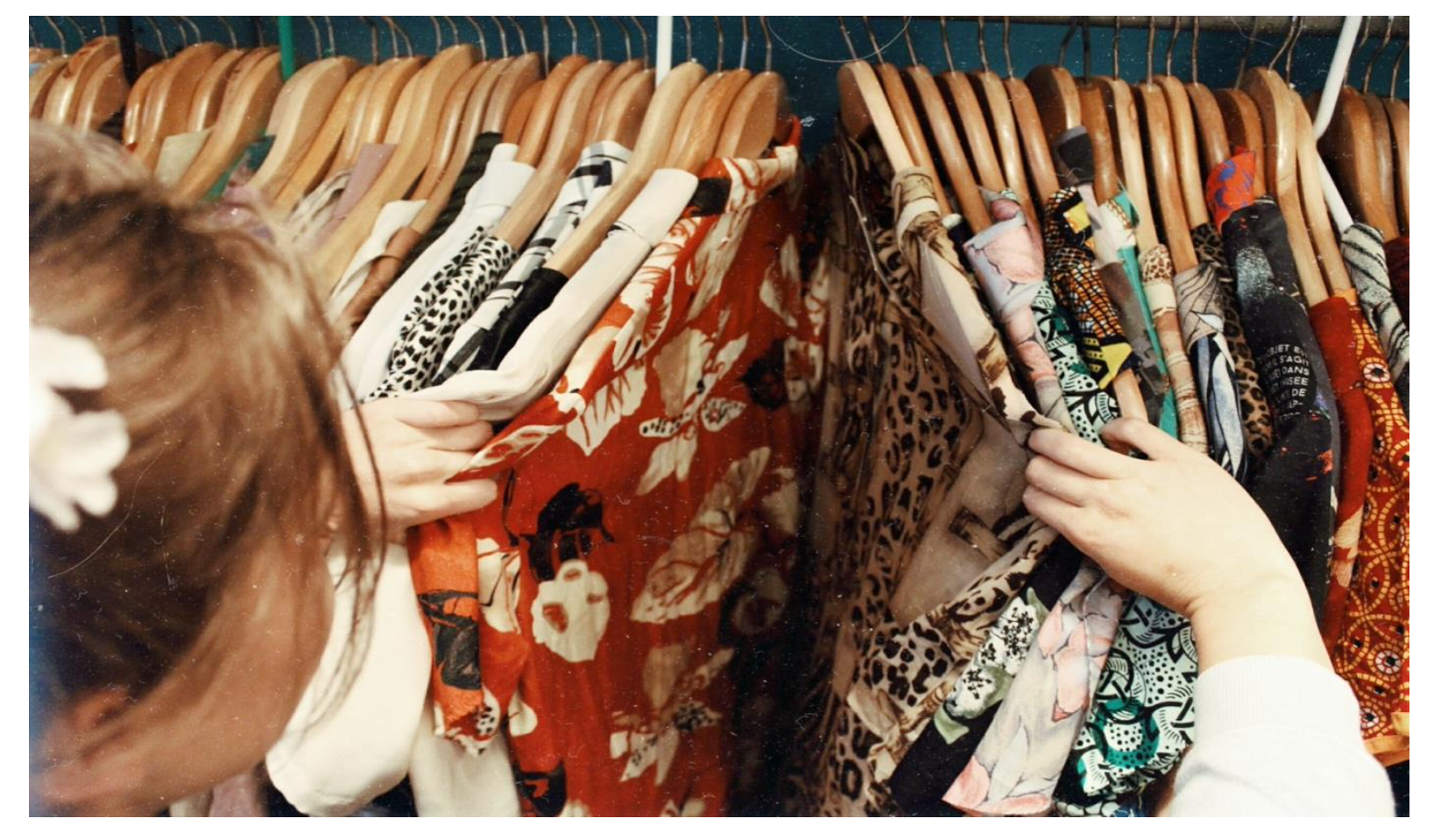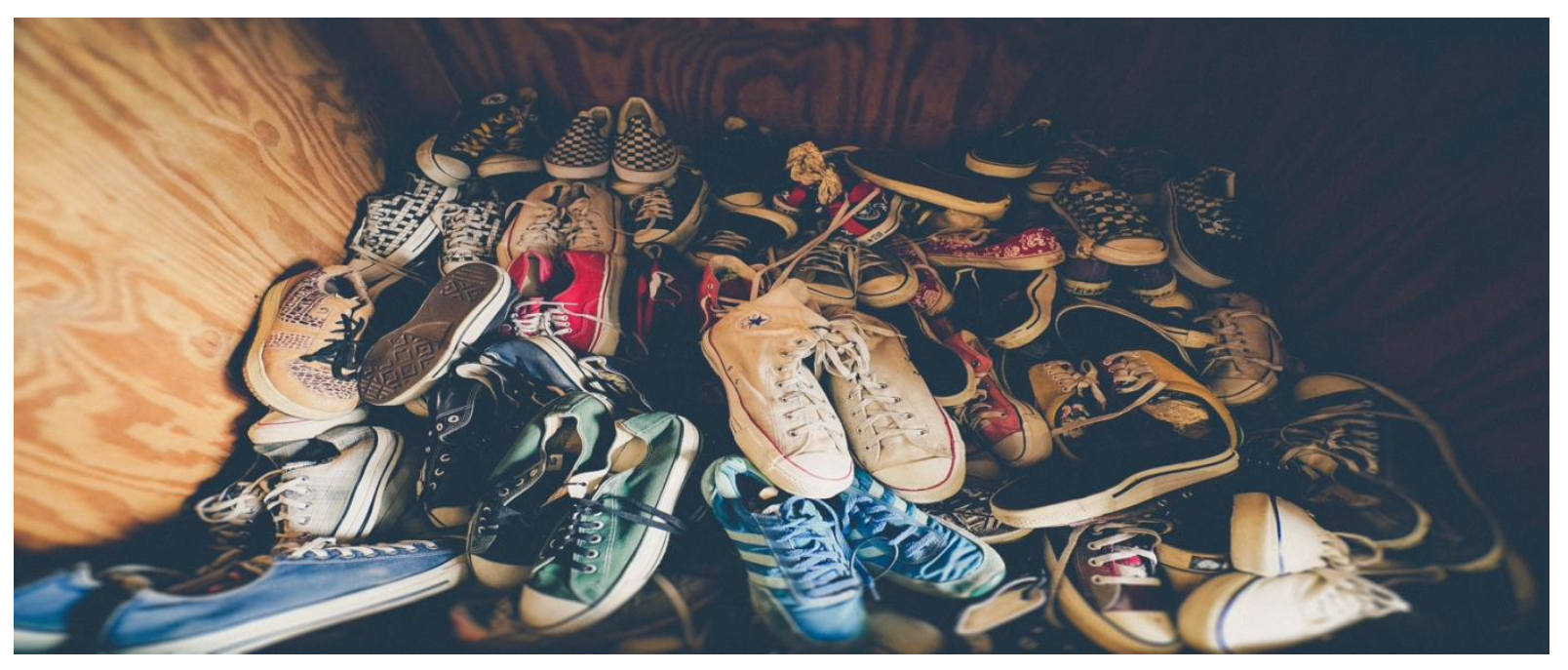NEWS
Textile Waste: Reduce, Reuse, Recycle

Guest blogger Jaclyn Noble is an experienced and accomplished textile supply chain expert with over 20 years of leadership experience for renowned USA retail brands including Spanx, Coach, The North Face, and Victoria’s Secret. Originally from Scotland, she obtained her degree in Textile Technology before relocating to Hong Kong. In 2002, she settled her family in Westport, where she has been an active member of the community. Jaclyn is the proud mom of three, fun, young adults who all attended Long Lots, Bedford, and Staples. Additionally, she shares her life with two beloved Spaniels, Maxi, and Sunny, who can frequently be seen enjoying Winslow Park.
Do you ever wonder where all your discarded textiles go?
Do you long to find your much-loved apparel a wonderful second home?
Do you worry you’ve loved your garments way too much to recycle?
The average American throws away 80 pounds of clothing per year. While we hope to reduce the overall amount of textile waste we produce, the good news is that 95% of worn or torn textiles can be donated or recycled. The bad news is only 15% are, which contributes to a massive global waste issue.
The environmental impact of textile waste has spiraled out of control. With the apparel sector contributing to approximately 10% of the annual global carbon emissions, this fraction is projected to grow to more than 50% by 2030. Having worked in the apparel industry for over three decades, I have witnessed the relentless pace of fast fashion, and textiles becoming one of the largest polluters in the world.
There is some good news! Westport is recycling more and more of its textile waste.
Bay State Textiles, which operates donation boxes at the Westport Transfer Station, have steadily increased from 7,620 pounds in 2016 to 28,230 pounds in 2022.
Many people think their waste needs to be useable to be recycled. However, Bay State Textiles will accept any condition of apparel, footwear, accessories (bags, gloves, scarfs), home linens, pillows, throws, and stuffed animals – as long as they are dry. Click here for the full list.
So, whatever you buy, try to keep it in circulation, and REDUCE, REUSE, RECYCLE!
Along with Bay State Textiles, there are other ways to reduce the estimated 90,000 yearly tons of textile waste generated in CT.

REDUCE – The most sustainable garment is the one you already own!
The best way to reduce apparel waste is to stop the constant stream of statement pieces in your wardrobe. Easier said than done, I know, but with the total global textile waste at approximately 92 million tons per year, most of which ends up in the landfills of developing countries, reducing the number of garments made across the globe is critical. How do you do this?
The average person only wears 20% of the clothes in their closet.
Crazy right? So if you’re going to add to your collection, the best way to reduce is to practice conscious shopping: look for higher quality timeless pieces which will last longer and, where possible, try to purchase from sustainable brands (The Luxe Strategist).
Some well-known sustainable brands here in town are Patagonia, Eileen Fisher, Theory (Good Collection), and Unsubscribe. Make sure to visit the website of the brands you love and see if they publish a sustainability plan (Lululemon’s Sustainability Plan). Use your spending dollars to influence the change you want to see.
Where possible, go for natural fibers such as cotton, linen, and wool, which are easier to decompose than synthetic materials like polyester, nylon, and acrylic.
You may not know, but your favorite synthetic material shirt sheds fibers when put into your laundry. Those fibers cause microplastic pollution in our waterways, which may have negative health effects on humans and ecosystems.
Lastly, be conscious when you shop. If you see something you “love”, leave it for 24 hours. Then, if you still love it the next day, make the purchase. Chances are that impulse to ‘buy” will be gone, and you’ll be able to say ‘bye” to more. Instead, try out the minimalist lifestyle – that’s what I’ve been doing!

REUSE – Keep whatever you buy in circulation for as long as possible!
Many amazing, ethical businesses in Westport focus on clothing reusability.
Instead of buying new, consider buying “pre-loved” garments. Around the Rosey (specializing in children’s clothing), Designer Label Consignments in Westport, and Twice Is Nice in Southport are a few of the businesses that have become members of a growing market for ‘reused’ clothes.
If you want to dive deep into thrifting and wish to make a road trip out of it, check out the Best Consignment Shops in CT.
Don’t worry; if you’re a homebody who loves to shop online (like me!), find an online resale fashion platform, here: Best Online Consignment Stores 2023. Also, I’ve loved using Rent the Runway to rent clothes online, especially if I have a special place to be. You can also try Best Clothing Rental Services to find more options like this.
Repair is another excellent way to extend the life of those beloved items, and here in town, we have some fantastic tailors and cobblers (yes, that’s still a thing!).
Or, get creative and upcycle (The Benefits of Upcycling) by turning an old garment into a new design or repurposing the scrap fabric and “parts” for new uses.

RECYCLE – Don’t judge, just donate!
What to do when you realize you must get rid of that cute hot pink dress that you’ve had since you were 20, with dreams that you’ll be able to fit back into it one day? Sorry, I’m projecting…
But seriously, there are so many great options when it comes to recycling clothes that you need to part ways with. Check out Sustainable Westport provides a great list of places to donate used clothing. Keep an eye out for other local clothing drives as well. For example, the Westport Woman’s Club is looking for gently used clothes to resell at the Curio Cottage on Imperial Ave. Greens Farms Church, on Hillandale, has a collection box where you can drop off used or unwanted garments to be donated to local non-profits in need.
Many fashion brands also have recycling programs. Take Madewell or Levi’s, for example, where you can donate denim from any brand, and the Nike Recycled Sneaker & Clothes Program, where you can drop off athletic shoes from any brand. Even if an item is badly stained, missing buttons, or torn, it can still be recycled into rags, pillows, stuffed animals, or insulation for various uses.
Bay State Textiles is a recycling no-judgment zone. They collect ALL dry donations into 40,000-pound bales and ship them to South America, where they sort them into categories. Anything in good condition is reused, and the balance is recycled.
With global apparel consumption expected to reach over 100 million tons annually by 2030, understanding how to reduce your contribution to this waste is a must, especially when considering that Americans throw away 80 pounds of textile waste per person every year.
Don’t think this is an impossible hill to climb, every individual has a part to play in the story of textile waste, and remember…
- The most sustainable garment is the one you already own!
- Whatever you buy, keep it in circulation for as long as possible!
- Don’t judge, just donate (as long as it’s dry)!